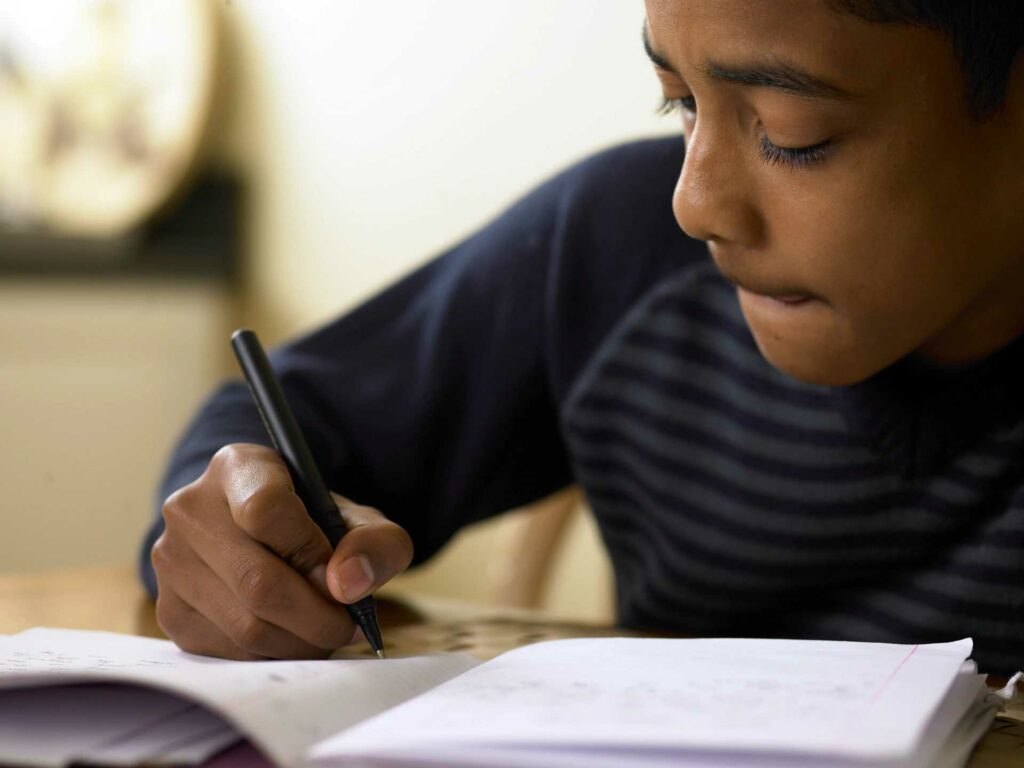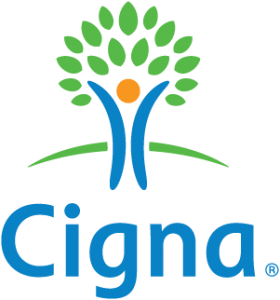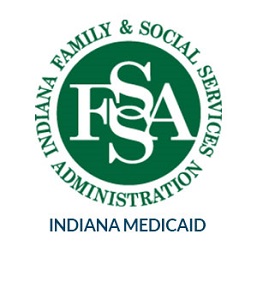
ABA stands for Applied Behavior Analysis– a method of behavior analysis that has been studied and used for decades. Its useful application for children with Autism Spectrum Disorder has brought it into the spotlight in recent decades, but it has been used since the 1960s to help children with autism and associated developmental disorders. At Mindful and Modern Therapies, ABA therapy takes our scientific understanding of behavior and applies it to real situations with the goal of increasing positive behaviors and decreasing negative behaviors. Mindful and Modern ABA Therapy practices ABA therapy for autism in a Montessori-style environment, an approach that resonates with many ASD children and their families.
Contact us to schedule an appointment.
How does ABA therapy for autism work?
ABA therapy for autism uses positive reinforcement as a primary strategy to encourage and affect behavioral change. Therapists begin by identifying a behavior to target as a goal. When a child successfully uses the behavior, they are rewarded in a way that is meaningful to them, specifically. By repeatedly giving a reward for using a positive skill over time, eventually, behavioral change is achieved. While it sounds simple, ABA therapy uses behavioral science to understand the unique motivations of each child, creating an individual plan based upon these nuances. At MMAT, we work using the Montessori Method, which encourages children to take the initiative so that we can work towards their independence through cooperation.
ABA therapy for autism also uses three steps– the A-B-Cs to understand and shape behavior:
A is for antecedent, the event that happens just before a target behavior. It may be verbal, in the form of a request or a question. It could be physical, something like a toy, a sound, a light, or some other environmental element. Sometimes, an antecedent is internal.
B is for the behavior resulting from the antecedent. This might take the form of an action, a spoken response, or some other response.
C is for consequence, whatever follows the behavior directly. This may include positive reinforcement of a positive behavior or non-reaction to a negative or inappropriate response.
This is a very simplified explanation of how ABA works. By using these tools, we can understand why a behavior is happening and how better learn how to reinforce positive behavior.
The beauty of ABA therapy is its flexibility. It can be adapted to meet each child’s unique needs, can be provided in almost any location– a classroom, at home, or in the community–, and can work on a one-on-one or group setting.
What is involved in a program of ABA therapy for autism?
At MMAT, our ABA therapy program centers on helping each individual child learn the skills that will make them more successful and independent on a short and long-term basis. Planning is essential to successful ABA therapy for autism. A highly-qualified behavior analyst (BCBA) customizes each child’s therapy plan based on their interests, preferences, needs, and skills. Family goals are often included as a part of the plan.
Therapists (RBT) and BCBAs continually measure a child’s progress through data collection. Every therapy session is an opportunity to collect data and to monitor progress towards goals. BCBAs meet with family members regularly to review information, adjust teaching plans, and plan ahead together.

Your child can learn with our Montessori Methods
Families play an active role in ABA therapy for autism
In addition to meeting with the BCBA and RBT on a regular basis to discuss progress and review milestones that have been met, families are active participants in ABA therapy. Caregivers, family members, and parents are encouraged to receive training so that they are also able to support a child’s skill practice and learning at home. By maintaining consistent positive reinforcement and other therapeutic protocols in various environments, we make sure that meaningful behavioral changes are long-lasting.
Who provides ABA therapy for autism and what are their qualifications?
There are several types of professionals who work together to provide ABA therapy for autism at MMAT.
- A board-certified behavior analyst (BCBA) is the top-tier of the professionals who work with children to provide ABA therapy. BCBAs give clinical diagnoses of ASD and create therapy plans for each child on an individual basis. Each BCBA has earned either a master’s degree or a Ph.D. in behavior analysis or psychology, passed a national certification exam, and in some states is required to attain a license.
- A board-certified assistance behavior analyst (BCaBA) works under the supervision of a BCBA. A BCaBA has earned a bachelor’s degree in behavior analysis, passed a national certification exam, and in some states is required to hold a license.
- A registered behavior technician (RBT) is a trained therapist who works under the supervision of a BCBA. These are the professionals who work one-on-one with children each day to practice skills and achieve the individual goals defined by the BCBA.
Get started with ABA therapy for Autism
The first step towards enrolling your child in a program is to take a tour of the Mindful and Modern ABA Therapies facility to see if it is a good fit for your family. If you believe that our staff and program is right for your child, then you must schedule an assessment with us to get a clinical diagnosis for your child. During the assessment, a BCBA will spend 15-30 minutes working with and observing your child in order to determine whether they have ASD. Once your child has been diagnosed, the process of being approved by your insurance company begins, and once you are approved, you may enroll your child in therapy. Once your child is enrolled, the BCBA will create a treatment plan specific to your child, and they will be paired with an RBT for their treatment.
Frequently asked questions about ABA therapy for Autism
ABA therapy works on the principles of Applied Behavior Analysis. That means that therapy is one-on-one, with a strong, ongoing emphasis on “pairing” the child with one dedicated therapist so that they develop a secure, long term relationship. ABA therapy methods are data-driven, meaning that they are highly individualized to fit with the needs of each child on a case-by-case basis.
Our Board Certified Behavior Analysts (BCBAs) perform assessments and create personalized therapy plans for each child that match their ability levels. On a day-to-day basis, each child is paired with their own Registered Behavior Technician (RBT), who is with them throughout the day. All of our therapy providers have years of experience and love what they do.
A Registered Behavior Technician (RBT®) is a paraprofessional certification in behavior analysis. All RBTs have undergone 40 hours of training, taken and passed an exam, and must renew their certification annually.
Board Certified Assistant Behavior Analysts (BCaBA®) possess an undergraduate-level certification in behavior analysis. BCaBAs are required to complete continuing education and apply for recertification every two years.
Board Certified Behavior Analysts (BCBA®) possess a graduate-level certification in behavior analysis. BCBAs are also required to complete continuing education and apply for recertification every two years.
There is no prescribed duration of time for a child to receive ABA therapy. While our technicians love watching your kids learn and grow, they understand that the ultimate goal of therapy is to prepare children for moving on to school successfully. Most children spend 2-3 years with an ABA therapist on average.
MMAT is for children with Autism Spectrum Disorder (ASD) whose families want them in a Montessori based learning environment that cultivates social skills, language development, and increased independence.
Because we are a sister institution to the Maria Montessori International school, we are able to provide regular one-on-one therapy sessions for our autistic children alongside their typical developing peers in the Montessori classrooms. This allows children to interact socially in a typical setting, make friends, and build a solid foundation for success when they transition to school at some point in the future.
Many people know Maria Montessori as a pioneer in the education field, but her revolutionary education style began after working with children who had various disabilities. The Montessori focus on personalization in education coupled with natural approaches lends itself to teaching children of all abilities. Mindful and Modern Therapies was inspired by seeing many of our students with ASD flourishing in Montessori education. By bridging the gap we saw in connecting traditional therapy to learning, we found an effective way to treat students with ASD in a natural environment.
For us, we see Montessori as bringing purpose to therapy.
A natural environment includes objects such as real dishes that children learn how to use, clean, and put away. These small details prepare them for functioning in the world. A garden area allows children to learn about nature and how they fit into the picture, as well as helping a child to see beyond their immediate surroundings. A natural environment for your child helps them to learn the skills they need to become life-long learners. This follows the principles of Montessori education, and encourages your child to develop their whole self – physically, socially, emotionally, and spiritually.
Yes! We believe children of all abilities can learn together and from one another. We create an environment where everyone can learn at their own pace, and benefit from their peers, regardless of ability.
The Mindful and Modern therapies and educational programs we use are suitable for children from as young as birth to as old as 12 years old.
While the number of children in ABA therapy sessions varies from day to day and session to session, each child is always paired with their therapist. The therapy facility is separate from the Maria Montessori by a door. On the Montessori side, there may be as many as 25 children at a time, but children receiving ABA therapy will be accompanied when they visit and join the Montessori students.
We have three options for sessions for therapy work: a Full-Day and two (2) Half-Day programs.
Our Full Day program is from 8:30 am to 3:30 pm, while our half-day programs are either 8:30 am – 12:30 pm or 1:30 am-5:30 pm.
Our lunch is from 11:30 am – 12:30 pm.
There is no one-size-fits-all approach to ABA therapy, as each child is different. We approach every child on a case-by-case basis and make recommendations accordingly. Some of our children attend a half-day session in combination with a half-day at school.
To ensure lasting benefits for the whole family unit, we encourage family participation in therapy. By continuing therapeutic practices in the home, children can adopt new habits and behaviors more easily. Our Board Certified Behavior Analysts (BCBAs) work with parents to guide them through how to mirror therapy methods at home. Additionally, we host interactive events that are open to both parents and children.
If you believe your child may be autistic, we may be able to help by providing ADOS testing– the first step in obtaining an Autism Spectrum Disorder (ASD) diagnosis.
In 60-120 minutes, we can observe your child in a series of social interactions to determine whether they may have ASD. This test may be covered by your insurance, please check with us beforehand.
- The first step we suggest is a visit to one of our centers to see for yourself whether it is a good fit for you and your child.
- After an on site tour, our Director of Enrollment will walk you through scheduling an assessment and diagnosis and begin the process of getting approval from your insurer and/or discussing any additional fees or tuition.
- Once your paperwork is processed and approved by your insurer, we will contact you to set a date your child can begin therapy with us!
We will help you move through the process as quickly as possible, but due to the process required for insurers to approve billing and claims for diagnostic assessments and to approve MMAT services, it can take up to 90 days from the first visit to begin therapy.
Because we are completely unique and the only center of it’s kind in the state of Indiana, we routinely have a number of smart families wanting to enroll their children with us, so the time to enroll could also be affected by how many children we may have on our waitlist for services.
If there will be any additional time added to the enrollment process due to the length of our waitlist we will let you know right up front so you can decide to move forward based on full transparency from us.
Yes, all of our therapeutic services are covered by certain insurers, and we process all of our claims in-house. From the initial intake to patient statements and claims submissions, our knowledgeable staff takes care of all insurance matters. If your insurance company is not listed on our provider list, you may still inquire with them to see if it is possible to get into our network.
Our therapy is currently covered by the following insurers:
- Indiana Medicaid
- Medicaid Managed Care
- Anthem Medicaid
- CareSource Medicaid
- MDWise
- Cenpatico/MHS
- Aetna
- Cigna
- Optum/UBH
- Tricare






If you are low-income and have a child with ASD, we encourage you to look into the various Medicaid options you may qualify for. These programs are designed to help low-income families gain access to medical care and therapy, and there is a good chance that you will qualify.
We are also an approved provider for the Indiana ESA Scholarship! If your child has an autism or special needs diagnosis and is age 5 or older they automatically qualify and you can use the scholarship funds towards any of our fees or tuition costs like most of our families do.
As a courtesy, our ESA experts will help walk you through each step of the process of getting your child approved for the Indiana ESA Scholarship so take advantage of us!
Yes, we do offer speech therapy for Autism Spectrum Disorder! Our speech therapist addresses speech, language, social, play, and cognitive skills as well as help children who have feeding and swallowing challenges.
Our speech therapy will begin with an assessment to identify the type of communication disorder and the best way to treat it.
Speech therapy might include:
- interacting through talking and playing, and using books, pictures other objects as part of language intervention to help stimulate language development
- modeling correct sounds and syllables for a child during age-appropriate play to teach the child how to make certain sounds
- providing strategies and homework for the child and parent on how to do speech therapy at home
We do offer occupational therapy for Autism Spectrum Disorder. Our occupational therapist work with you and your child to provide individualized treatment plans that best meet your child’s evolving needs. The treatment plan might include skills like Self-Care, Feeding, Visual Motor, Fine Motor, Social, and Interacting with Peers. The plan is designed for the child to become school ready and to succeed in life.
The main difference between occupational therapy and physical therapy is that OT focuses on improving the child’s ability to perform activities of daily living and PT focuses on improving a child’s ability to perform movement of their body.
While we currently do not offer physical therapy for children with Autism Spectrum Disorder, we are looking into adding it as a service in the near future, so stay tuned and do not hesitate to inquire with us about it.
